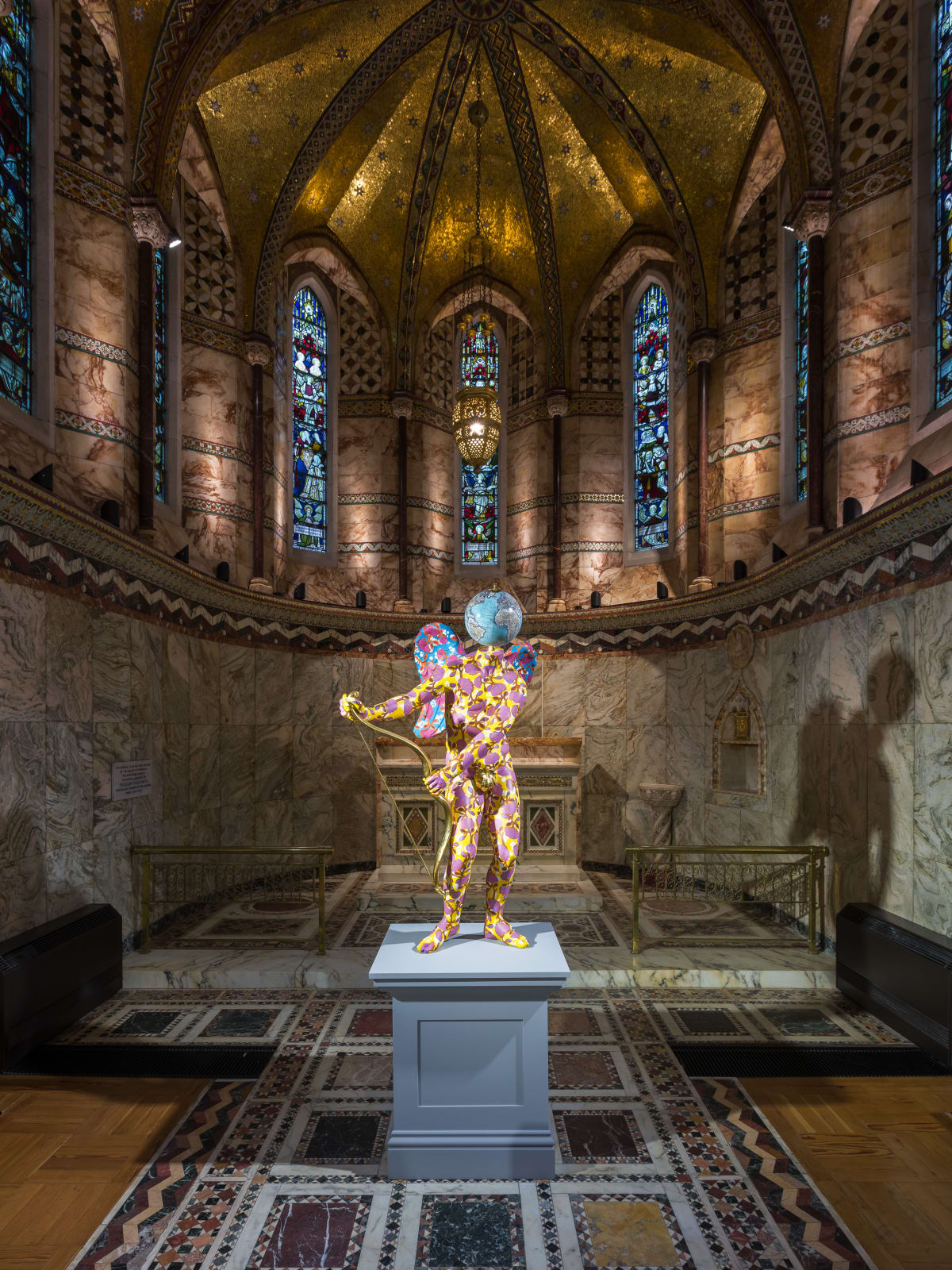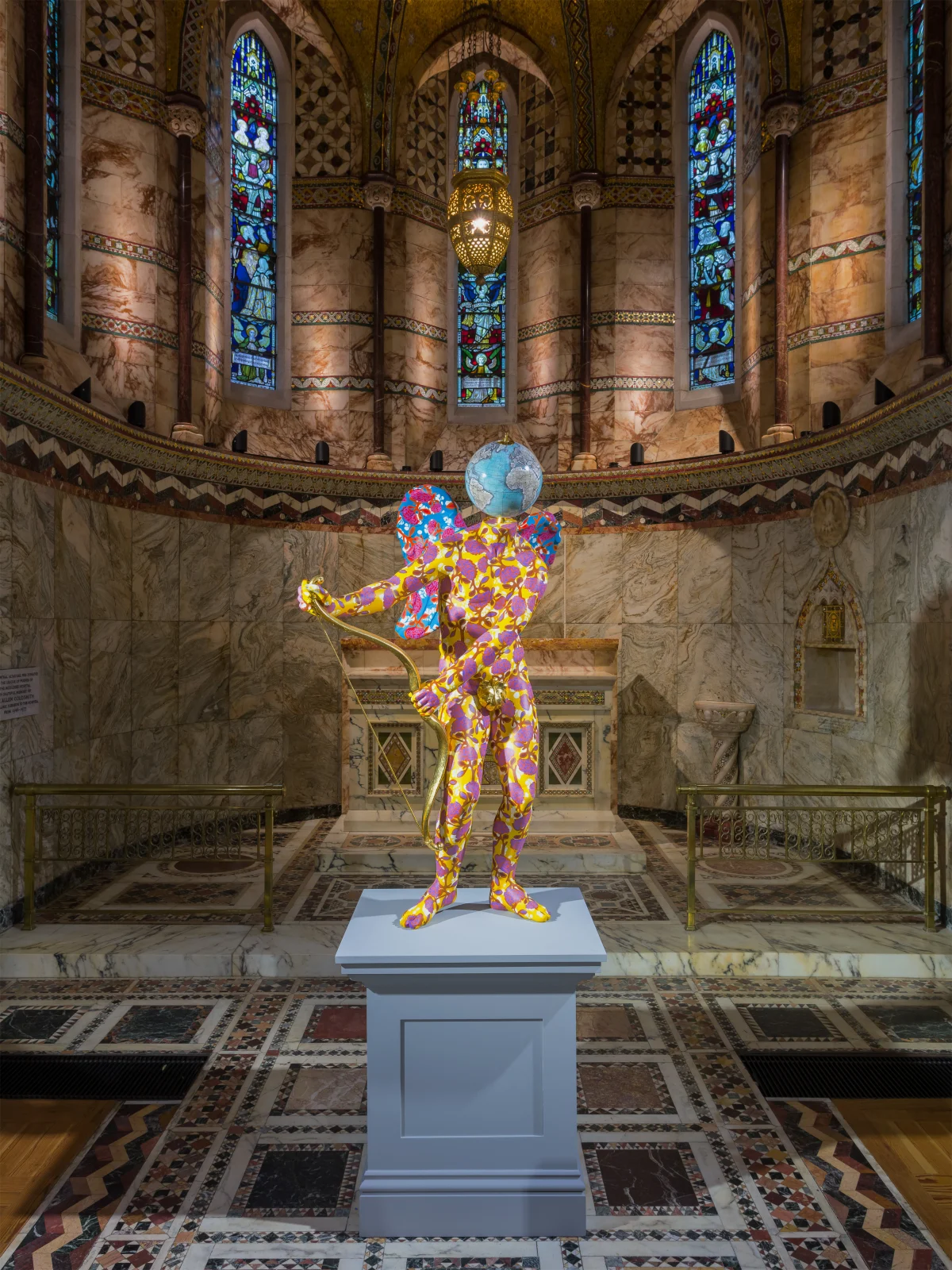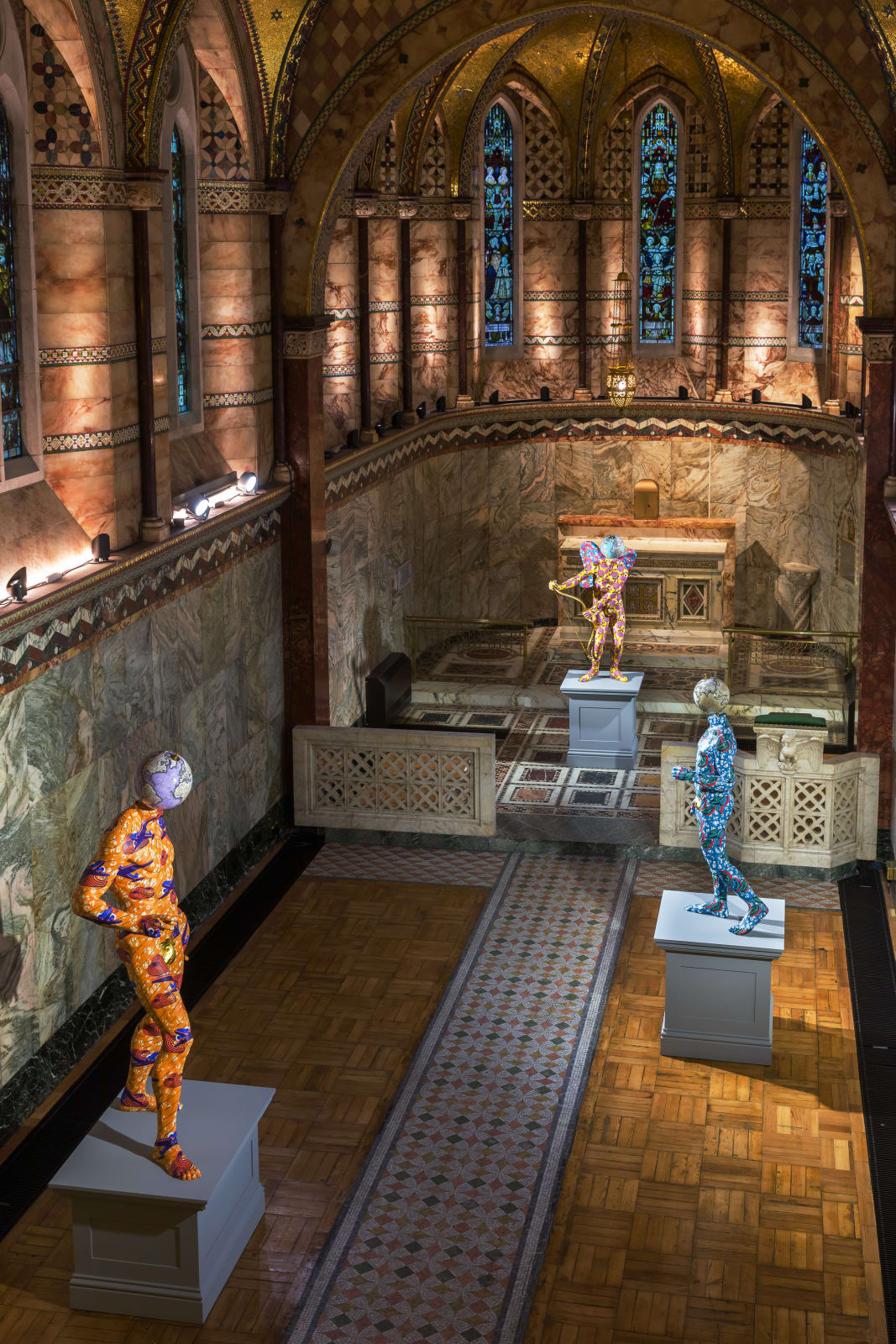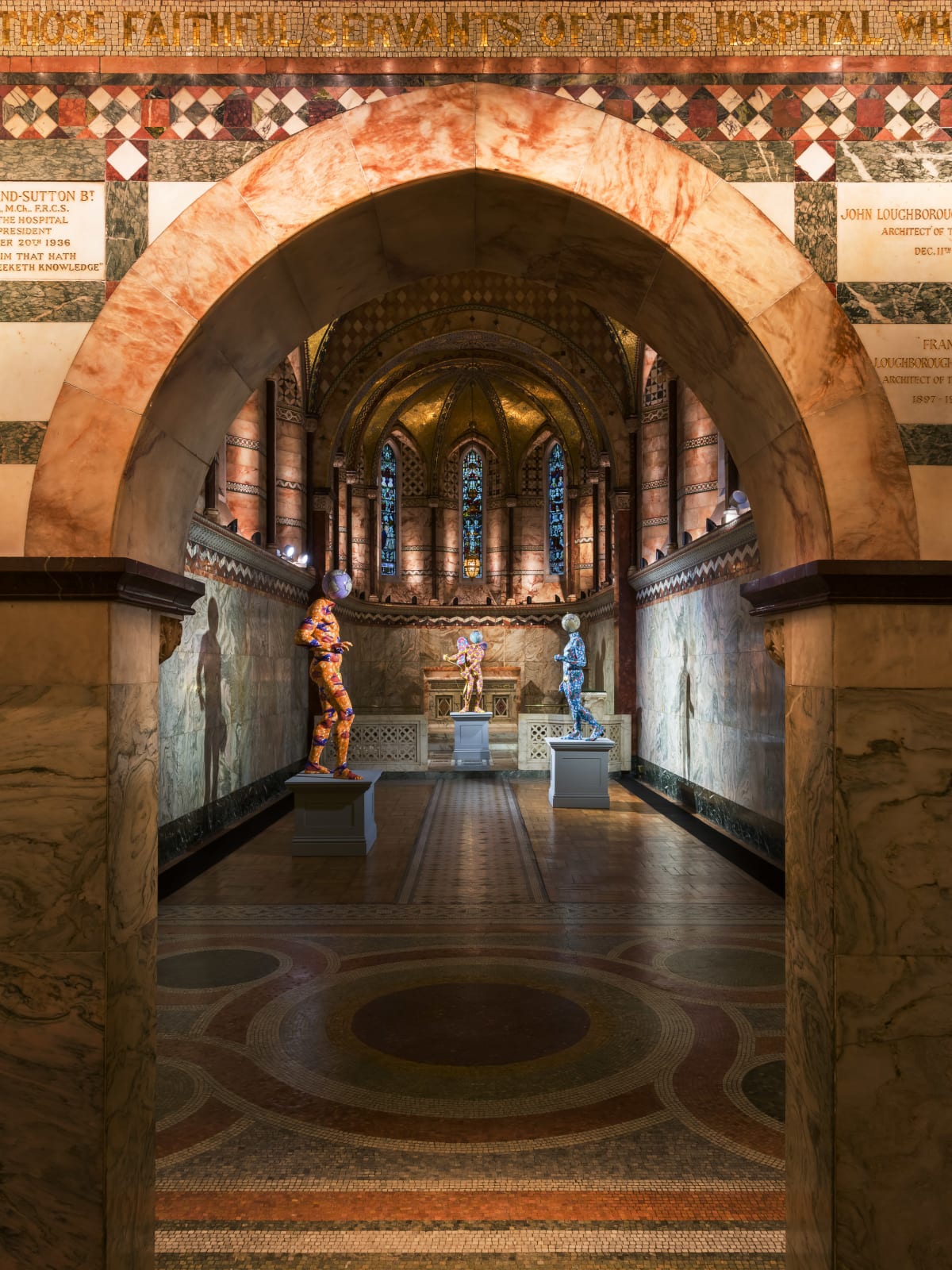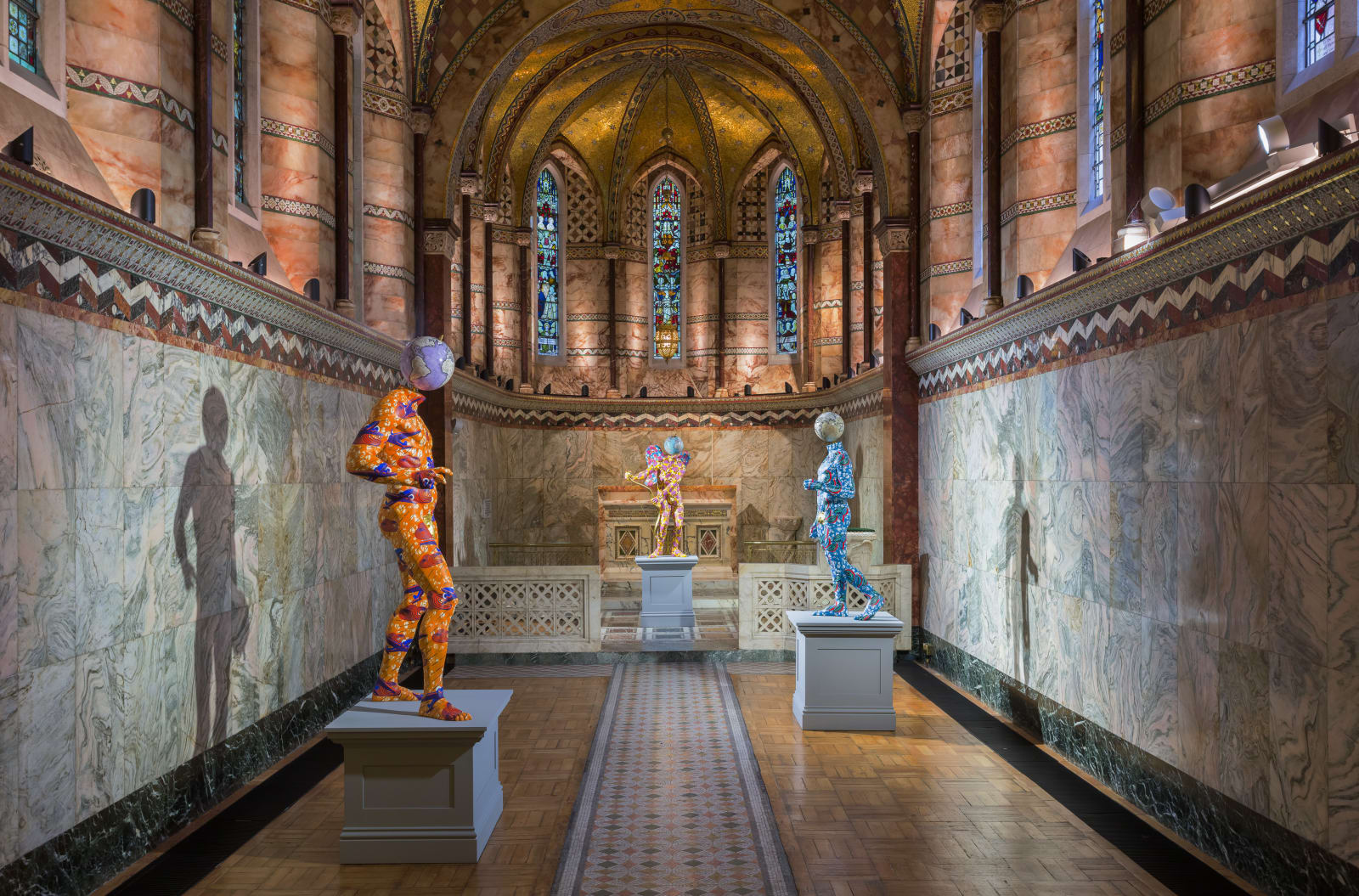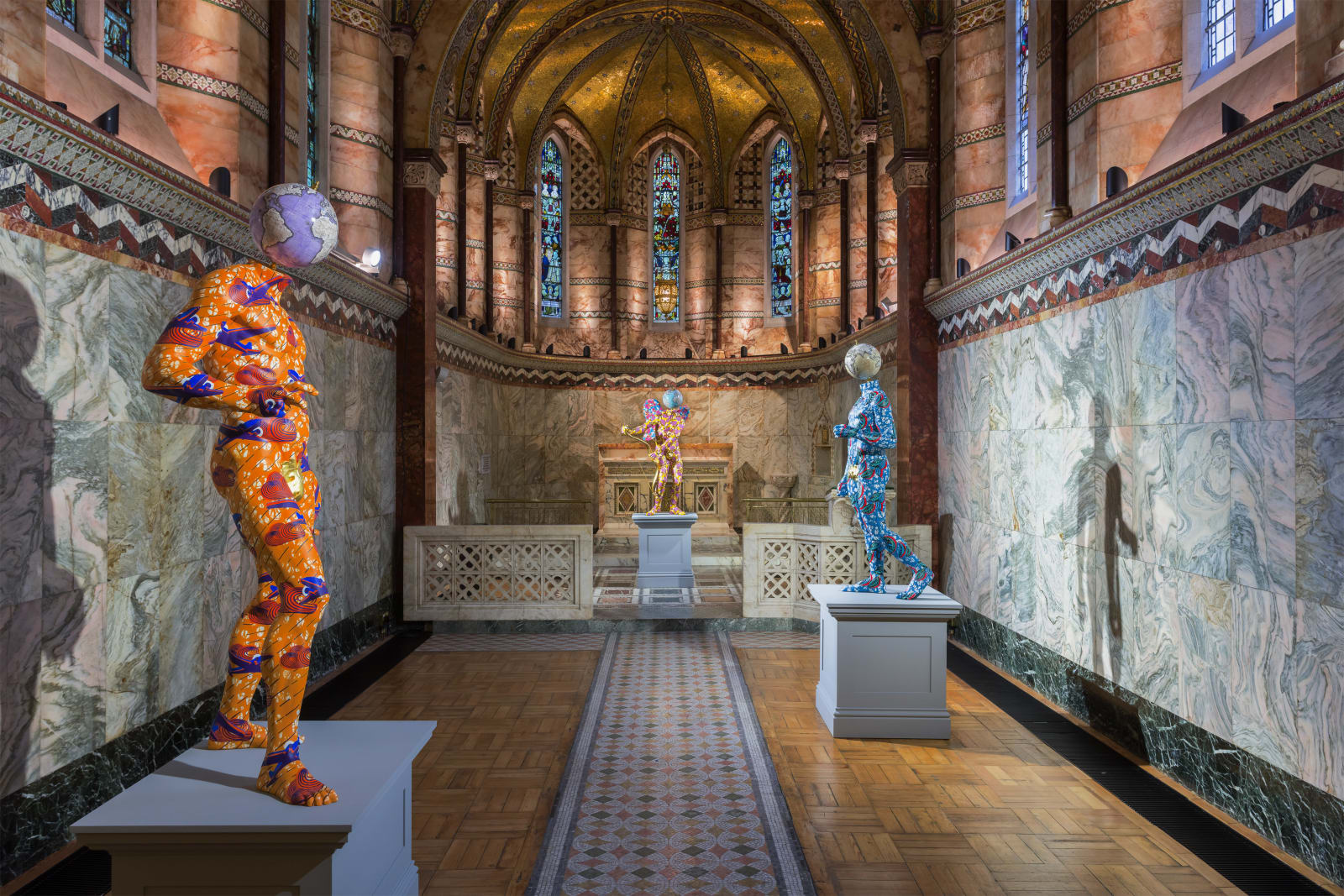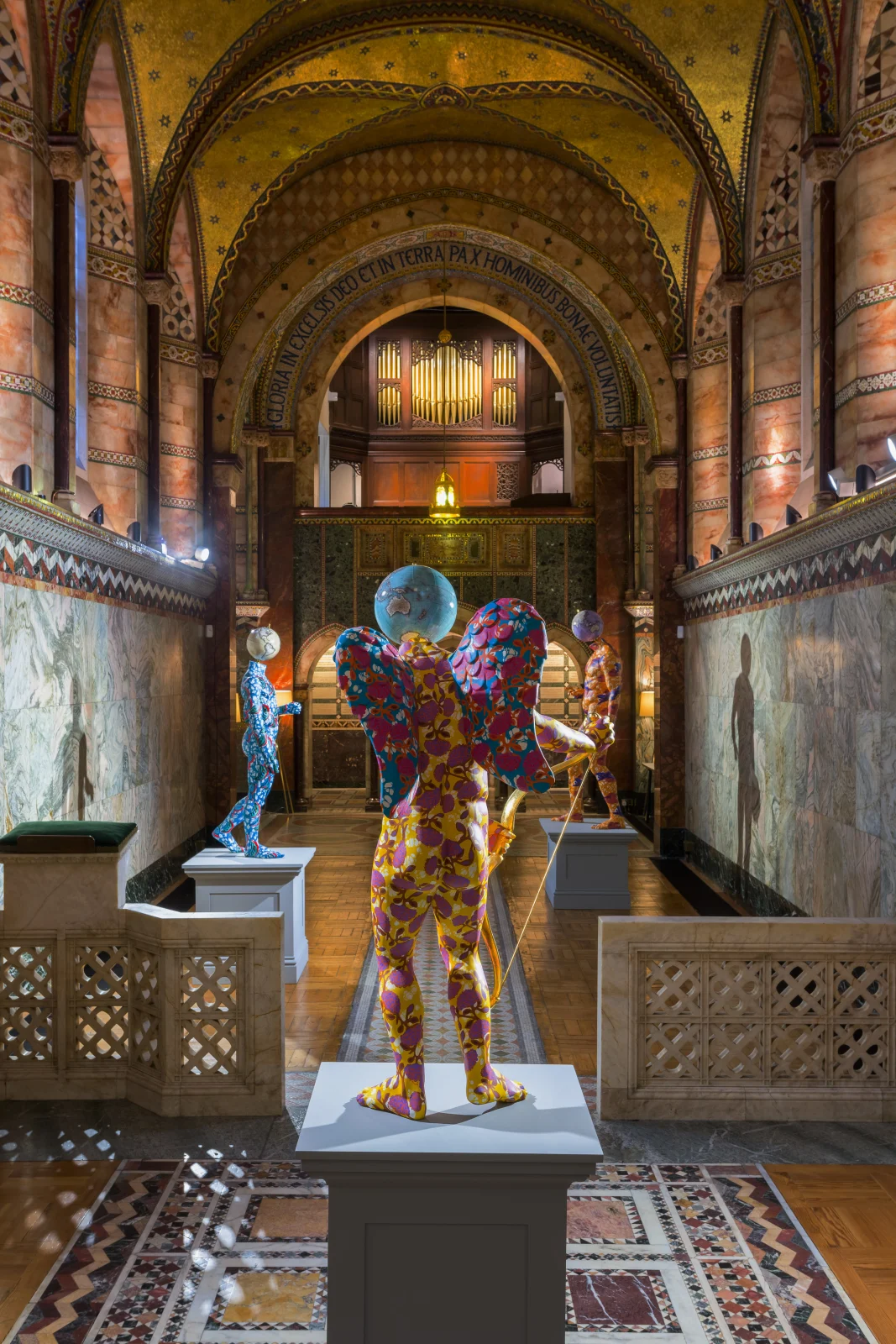
Yinka Shonibare MBE at Fitzrovia Chapel
Overview
Coinciding with Frieze London and Frieze Masters, Stephen Friedman Gallery is delighted to present a solo presentation of hand-painted sculptures and works on canvas by Yinka Shonibare MBE in the exquisite and intimate setting of Grade II* listed Fitzrovia Chapel, London.
In the central nave stand three unique sculptures in which Shonibare reinterprets masterpieces of Greek and Roman antiquity. In each work, Shonibare's figures are transformed with the artist's uniquely designed signature Dutch wax batik patterns that are painted directly onto the surface. Each bears a bespoke handmade globe as its head that depicts a contemporary map, alluding to a form of universal identity. Reimagining these classical myths for the present day, Shonibare retains the dramatic impact of the original statues.
Doryphoros, one of the best known Greek sculptures, is an important early example of classical realism. In this work Shonibare depicts a muscular athlete, the sculpture’s naked form exemplifying the archetype of masculine athleticism and strength. The writings of Joachim Johann Winckelmann, a German art historian, were influential to Shonibare when creating this series. Winckelmann believed white marble classical sculpture to represent the embodiment of ideal beauty. In this work Shonibare manipulates the aesthetics of the form to challenge the accepted definition of the idealised body.
Shonibare also reimagines Discobolus, portraying the eternally youthful, naked athlete paused in contemplation as he prepares to throw the discus. Created for the exhibition ‘From Life’, which launched the Royal Academy of Arts’ 250th anniversary celebrations in 2018, Shonibare captures the instant immediately before the athlete launches himself forward for the throw. Shonibare’s inspiration for this sculpture is a Roman copy of a now lost bronze work, excavated in the Appian Way by the dealer Gavin Hamilton in 1792, and housed in the collection of The Vatican Museums.
The winged figure of Cupid, the God of desire, erotic love, affection and attraction clutches a bow which represents his source of power. In classical mythology, a person, or even a deity, who is shot by Cupid's arrow, is filled with uncontrollable desire. Based on a Roman copy of a bronze work dating from the Fourth century BC, the original statue was also excavated by Gavin Hamilton. The Roman sculpture was subsequently sold to the collector Charles Townley. In correspondence regarding the sale, Hamilton described this statue as ‘by much the finest extant for beauty, as well as preservation’ and urged the prospective collector to ‘preserve it, by putting it in a case lined with black velvet’. The British Museum later acquired the sculpture in 1805.
In the central nave stand three unique sculptures in which Shonibare reinterprets masterpieces of Greek and Roman antiquity. In each work, Shonibare's figures are transformed with the artist's uniquely designed signature Dutch wax batik patterns that are painted directly onto the surface. Each bears a bespoke handmade globe as its head that depicts a contemporary map, alluding to a form of universal identity. Reimagining these classical myths for the present day, Shonibare retains the dramatic impact of the original statues.
Doryphoros, one of the best known Greek sculptures, is an important early example of classical realism. In this work Shonibare depicts a muscular athlete, the sculpture’s naked form exemplifying the archetype of masculine athleticism and strength. The writings of Joachim Johann Winckelmann, a German art historian, were influential to Shonibare when creating this series. Winckelmann believed white marble classical sculpture to represent the embodiment of ideal beauty. In this work Shonibare manipulates the aesthetics of the form to challenge the accepted definition of the idealised body.
Shonibare also reimagines Discobolus, portraying the eternally youthful, naked athlete paused in contemplation as he prepares to throw the discus. Created for the exhibition ‘From Life’, which launched the Royal Academy of Arts’ 250th anniversary celebrations in 2018, Shonibare captures the instant immediately before the athlete launches himself forward for the throw. Shonibare’s inspiration for this sculpture is a Roman copy of a now lost bronze work, excavated in the Appian Way by the dealer Gavin Hamilton in 1792, and housed in the collection of The Vatican Museums.
The winged figure of Cupid, the God of desire, erotic love, affection and attraction clutches a bow which represents his source of power. In classical mythology, a person, or even a deity, who is shot by Cupid's arrow, is filled with uncontrollable desire. Based on a Roman copy of a bronze work dating from the Fourth century BC, the original statue was also excavated by Gavin Hamilton. The Roman sculpture was subsequently sold to the collector Charles Townley. In correspondence regarding the sale, Hamilton described this statue as ‘by much the finest extant for beauty, as well as preservation’ and urged the prospective collector to ‘preserve it, by putting it in a case lined with black velvet’. The British Museum later acquired the sculpture in 1805.
The series of vibrantly coloured unique screen prints on canvas marked a new departure for Shonibare. Figures from Christian and African religious iconography merge into fantastical hybrids: what the artist calls ‘a third myth’. The artist created these works by using new technology and drawing on a large tablet. Each canvas began with an image of a European religious figure. Shonibare dressed the faces of the saints in African masks used in religious rituals. Stock market listings from the Financial Times are then juxtaposed with Dutch wax batik patterns and vivid clashing colours. The result is an arresting interruption of the classical representation of a saint in Shonibare’s distinctive style, nestled under the watchful eyes of the saints and physicians portrayed in the stained glass windows of Fitzrovia Chapel.
“First of all [I] think about picture making itself: the history of Modernism and the aesthetic of the mask in Modernist painting. So we are going back to Picasso. And then taking that signifier of religious ritual, which is the mask, and overlapping one religious symbol with another religious symbol.”
Dutch wax batik fabric was inspired by Indonesian design, mass-produced by the Dutch and British and eventually sold to the colonies in West Africa. In the 1960s the material became a new symbol of African identity and independence. Since the early 1990s Shonibare has used it to represent the flexibility of identity, as much as the implications of trade and colonialism.
With an unobtrusive redbrick exterior, Fitzrovia Chapel is a secular building whose interior gleams with the intricate details and opulent decoration of an ornate Christian church. Originally housed within The Middlesex Hospital, its vaulted ceiling of dazzling gold mosaic mirrors the gold leaf on Shonibare’s sculptures. The central aisle of pale blue mosaic is lit through Gothic stained glass windows. Seventeen different types of marble and mosaic tiles adorn the nave and transept. By situating Shonibare’s works within this magnificent space, the artist’s signature patterns and seductive colours interrupt Western religious iconography and the canons of classical and Renaissance art.
Coinciding with Frieze London and Frieze Masters, Stephen Friedman Gallery is delighted to present a solo presentation of hand-painted sculptures and works on canvas by Yinka Shonibare MBE in the exquisite and intimate setting of Grade II* listed Fitzrovia Chapel, London.
